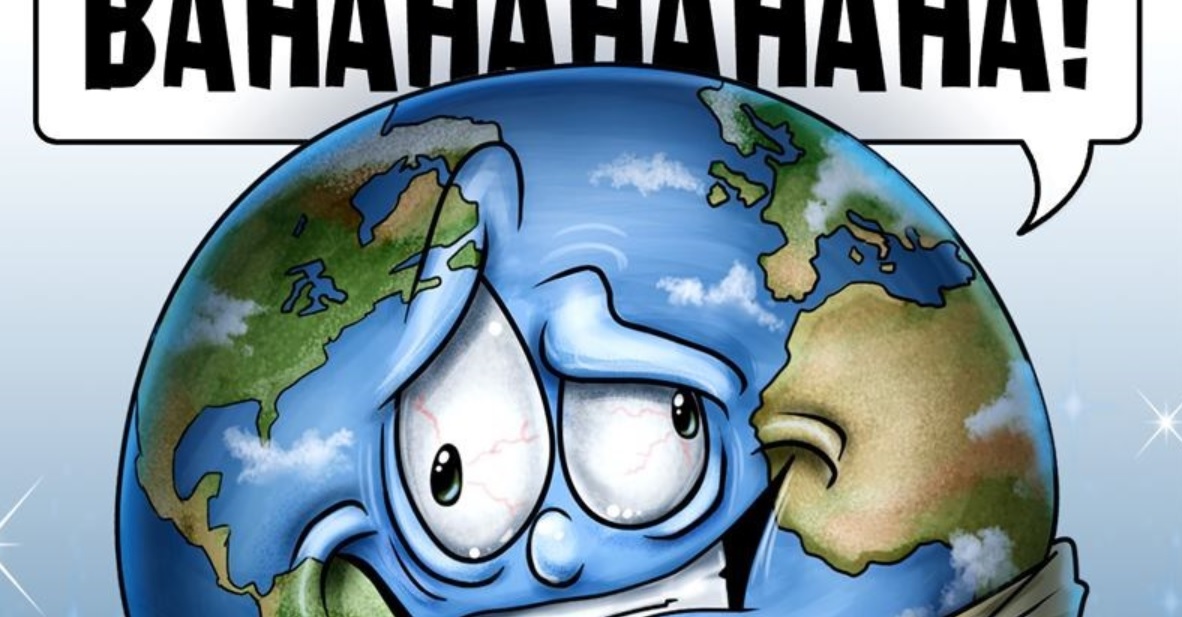
SICK IN THE HEAD
By now, two years into the spread of the not so novel coronavirus, it is time to let go. Many of us have called to put an end to the hysteria long ago when the minimal death rates became established observations. Others have taken their time and felt the need for the security of vaccination.
Whatever the case may be, we are now at a state where: A) The infection fatality rate continues to be minimal (about 0.2% on average, and 0.02% for those under 70); B) We have vaccines to at least minimize the impact of the disease on the most vulnerable.
Meaning, whether Omicron or Pi, the need for Draconian measures (or really, any measures beyond caring for the elderly) has passed long ago.
So with a focus on the last six months, it is interesting to see which countries have been able to muster the maturity and resistance to panic, and which countries are still stuck in perpetual hysteria.
Now, given the infection fatality rates are pretty much the same all over the world, and that the spreads come ago seasonally everywhere, the reaction of different countries is very telling. Same reality, different responses. Meaning, this is really an index of national panic and derangement.
So who is sick in the head? Well, before we look at the data, a few words on the sources and methodology. The data are the result of an analysis by the Oxford COVID-19 Government Response Tracker. They match each day in each country with a stringency index, measuring that country’s severity of response to Covid-19 on that day. The index takes into account things such as school closures, lockdowns, face masking, etc.
It’s always challenging to compare tiny countries such as Belgium to gigantic countries like America. Take it with a grain of salt, especially for America: The researchers use the region with the most severe response in each country, so the index for America is ultimately an index for New York and California.
The index runs from 0 to 100 for each day. I used the average for the last 6 months for a select group of countries – countries whose data can be trusted (so no Cameroon or Gambia).
So who is sick in the head?
| Country | Average of stringency_index |
| Hungary | 29.5 |
| Estonia | 30.6 |
| Sweden | 34.7 |
| Lithuania | 36.1 |
| Finland | 37.1 |
| Denmark | 37.8 |
| Norway | 38.0 |
| Slovenia | 40.5 |
| Slovakia | 41.7 |
| Poland | 42.4 |
| South Korea | 46.0 |
| Spain | 46.2 |
| United Kingdom | 46.4 |
| Switzerland | 46.5 |
| Belgium | 47.3 |
| Netherlands | 47.7 |
| Israel | 47.7 |
| Taiwan | 49.1 |
| Japan | 49.8 |
| Uruguay | 50.2 |
| Portugal | 52.3 |
| United States | 53.5 |
| Austria | 57.4 |
| New Zealand | 58.4 |
| France | 61.1 |
| Germany | 61.7 |
| Italy | 66.1 |
| Canada | 67.3 |
| Australia | 67.8 |
| Greece | 70.5 |
Interestingly, Europe’s most successful nations, the Nordics, are taking it pretty easy. Sweden has been a model for a subdued response since the beginning of the Covid-19 hysteria, much like Florida.
Australia and Canada are outlying nutcases, demonstrating that the old stiff upper lip that used to characterize the Anglosphere is now replaced by cheap pop-hysteria.
The developed economies of East Asia, Taiwan, Japan, and South Korea also seem to be fairing calmly. Perhaps a serene and pious combination of Zen and Confucianism
Israel is an interesting case. I actually don’t buy it, having just come back from a visit. The country’s index should be higher on account of its endless booster shots, a weird system of green and purple badges, and three TV channels all clamoring in unison “Gewalt, Covid!”
Presumably, based on my general knowledge, most of Red America would score like Sweden or lower. The fact that even the strictest of states are still lower than Canada and Australia is encouraging.
Was it Einstein who said that doing the same thing while expecting different results is the definition of insanity? Well, doing different things while receiving the same result is also a form of mental illness. No more of these hysterics!
Follow us on Twitter!
And sign up for updates here!